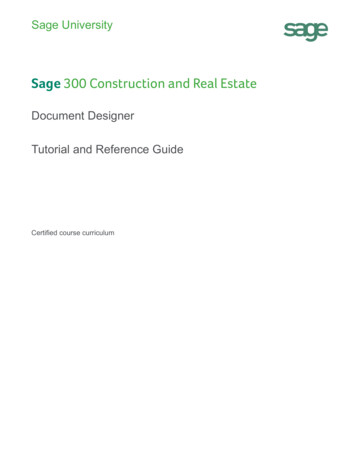
Transcription
Sage UniversitySage 300 Construction and Real EstateDocument DesignerTutorial and Reference GuideCertified course curriculum
IMPORTANT NOTICEThis is a publication of Sage Software, Inc.Copyright 2015 Sage Software, Inc. All rights reserved.Sage, the Sage logos, and the Sage product and service names mentioned herein are registered trademarks or trademarksof Sage Software, Inc. or its affiliated entities. Microsoft, Office, and Word are either registered trademarks or trademarksof Microsoft Corporation in the United States and/or other countries. This workbook is an independent publication and isnot affiliated with, nor has it been authorized, sponsored, or otherwise approved by Microsoft Corporation.All othertrademarks are the property of their respective owners.Your use of this document and the Sage product(s) described herein is governed by the terms and conditions of the SageEnd User License Agreement ("EULA") or other agreement that is provided with or included in the Sage product.Nothing in this document supplements, modifies or amends those terms and conditions. Except as expressly stated inthose terms and conditions, the information in this document is provided by Sage "AS IS" and Sage disclaims all express,implied or statutory warranties of any kind, including but not limited to the warranties of merchantability, fitness for aparticular purpose or of non-infringement. No implied license is granted to you under any Sage intellectual property ortrade secret right. Sage reserves the right to revise, supplement or remove information in this document at any timewithout notice to you or others.10/2015
Document Designer Tutorial and Reference GuideContentsContentsDocument Designer . . . . . . . . . . . . . . . . . . . . . . . . . . . . . . . . . . . . . . . . . . . . . 3Document Designer Requirements . . . . . . . . . . . . . . . . . . . . . . . . . . . . . . . . . . . . . . 4Sage 300 Construction and Real Estate Security . . . . . . . . . . . . . . . . . . . . . . . . . . . 4Templates . . . . . . . . . . . . . . . . . . . . . . . . . . . . . . . . . . . . . . . . . . . . . . . . . . . . . . . . . 4Create a Document . . . . . . . . . . . . . . . . . . . . . . . . . . . . . . . . . . . . . . . . . . . . . . . . . . 6Activity 1—Create a New Document . . . . . . . . . . . . . . . . . . . . . . . . . . . . . . . . . . . . . 6Create a Template . . . . . . . . . . . . . . . . . . . . . . . . . . . . . . . . . . . . . . . . . . . . . . . . . . . 9Activity 2—Create a New Template . . . . . . . . . . . . . . . . . . . . . . . . . . . . . . . . . . . . . . 9Display Information in a Table . . . . . . . . . . . . . . . . . . . . . . . . . . . . . . . . . . . . . . . . . 12Insert Fields From Other Database Tables . . . . . . . . . . . . . . . . . . . . . . . . . . . . . . . 13Activity 3—Insert Fields From Other Database Tables . . . . . . . . . . . . . . . . . . . . . . 14Insert a Table of Information . . . . . . . . . . . . . . . . . . . . . . . . . . . . . . . . . . . . . . . . . . 17Activity 4—Insert a Table of Information . . . . . . . . . . . . . . . . . . . . . . . . . . . . . . . . . 17Working With Templates . . . . . . . . . . . . . . . . . . . . . . . . . . . . . . . . . . . . . . . . . . . . . 20Use an Existing Document as a Template . . . . . . . . . . . . . . . . . . . . . . . . . . . . . . . . 20Delete a Template . . . . . . . . . . . . . . . . . . . . . . . . . . . . . . . . . . . . . . . . . . . . . . . . . . 20Where Template Files Are Stored . . . . . . . . . . . . . . . . . . . . . . . . . . . . . . . . . . . . . . 21Documents Based on Sample Templates . . . . . . . . . . . . . . . . . . . . . . . . . . . . . . . . 22 2015 Sage Software, Inc.1
Contents2Sage 300 Construction and Real Estate 2015 Sage Software, Inc.
Document Designer Tutorial and Reference GuideDocument DesignerDocument DesignerYou can now take advantage of today’s industry-standard word processing program,Microsoft Word, with your Sage software. Using Document Designer, you cangenerate a Word document with your data directly from Sage 300 Construction andReal Estate, then use the powerful word processing features of Word to format andrefine your document.NOTE: Document Designer is available in the U.S., Canadian, and Australian editions ofSage 300 Construction and Real Estate.In this handout, you will be introduced to Document Designer concepts, including: Software requirements. How to access and use this feature. Creating documents based on templates. Designing custom templates. 2015 Sage Software, Inc.Online Training and Workbooks at www.SageU.com3
Document Designer RequirementsSage 300 Construction and Real Estate Version 15.1Document Designer RequirementsIn order to use Document Designer, you must have the following installed on yourmachine: Sage 300 Construction and Real Estate CD version 15.1 and higher. Microsoft Word 2010 and higher (32-bit).Sage 300 Construction and Real EstateSecurityDocument Designer is only available in the Enter Commitment window. To use it,you must have security permissions to: JC: Tasks Commitments or PJ: Contract Control Commitments. Manage Templates and/or Create Documents for Document Designer.Menu Path—Sage Desktop Tools Security Administration Security Permissions byType TasksWARNING: Record level and file security does not affect Document Designer. In order tosafeguard sensitive company information, you should carefully consider which users togrant the permissions to use Document Designer.TemplatesThe documents you generate in Document Designer are based on templates. Atemplate contains text, images, formatting, and placeholders for database fields.When it is used to generate a document, the placeholders are replaced by actualvalues from your data.Compare the document in Figure 1 to the template in Figure 2 on the next page.4Local Training From Business Partners 2015 Sage Software, Inc.
Document Designer Tutorial and Reference GuideTemplatesFigure 1—DocumentFigure 2—Template 2015 Sage Software, Inc.Online Training and Workbooks at www.SageU.com5
Create a DocumentSage 300 Construction and Real Estate Version 15.1Sage provides the following commitment-related sample templates: Letter of Intent.docx Notice to Proceed.docx Purchase Order.docx Subcontract Agreement Checklist.docx Subcontract.docx.FOR MORE INFORMATION: See “Documents Based on Sample Templates” on page 22for examples of documents based on the sample templates.You can also create custom templates in Document Designer.FOR MORE INFORMATION: See “Create a Template” on page 9.FOR MORE INFORMATION: To find out where the template files are stored, see “WhereTemplate Files Are Stored” on page 21.Create a DocumentNOTE: Only users with the security permissions for Create Documents are allowed toperform this task. See “Sage 300 Construction and Real Estate Security” on page 4.You create a document for one commitment at a time in the Enter Commitmentwindow.Activity 1—Create a New Document1.Select JC: Tasks Commitments or PJ: Contract Control Commitments.2.Select the commitment for which you want to create a document and pressEnter on your keyboard. You can only print documents for the commitment thatis currently in the Enter Commitment window.TIP: If it is a new commitment, save it first.3.6Click Document Designer.Local Training From Business Partners 2015 Sage Software, Inc.
Document Designer Tutorial and Reference GuideCreate a DocumentMenu Path—JC: Tasks Commitments or PJ: Contract Control Commitments4.When the Document Designer window opens, select a template and click NewDocument.NOTE: The Document Designer window does not display templates that are alreadyopen in Microsoft Word. 2015 Sage Software, Inc.Online Training and Workbooks at www.SageU.com7
Create a Document5.Sage 300 Construction and Real Estate Version 15.1When the New Document window opens: Enter the file name for the document (a); the file extension is automatically*docx. By default, the file is saved in your company data folder or the locationspecified in File Locations (File Company Settings) for Attachments.If you want to save the file elsewhere, click the browse button (b) to specifythe location. If you want to access the document through a file link in the CommitmentAttachments window in the future, select the Link as Attachment checkbox (c). Click Create New Document.abc6.The document opens in Microsoft Word and contains information about thecommitment that is currently in the Enter Commitment window. If needed,you can type additional text or apply formatting to finalize the document.7.When you are finished with the changes, save the document in Microsoft Word.TIP: If you did not make any changes to the document, you do not need to save it beforeclosing Microsoft Word.WARNING: Unlike Sage 300 Construction and Real Estate reports and inquiries whichrestrict the information that a user can access based on record level and file security,documents created through Document Designer do not. For example, your templateincludes bank information from the Cash Management master and transaction files. Eventhough the user does not have security permissions to these files, when he uses thetemplate to create a document, the bank information is included. In order to safeguardsensitive company information, you should carefully consider which users to grant thepermissions to use Document Designer. See “Sage 300 Construction and Real EstateSecurity” on page 4.8Local Training From Business Partners 2015 Sage Software, Inc.
Document Designer Tutorial and Reference GuideCreate a TemplateCreate a TemplateWhen you create a template, you define the text, images, database fields asplaceholders, and formatting.The first time you use Document Designer to open an existing template or createa new template, you will be prompted to install the Word Document add-in inMicrosoft Word.Activity 2—Create a New TemplateNOTE: Only users with the security permissions for Manage Templates are allowed toperform this task. See “Sage 300 Construction and Real Estate Security” on page 4.1.Select JC: Tasks Commitments or PJ: Contract Control Commitments.2.Select a commitment and press Enter on your keyboard.NOTE: After you create the template, you will be able to use it with any commitment.3.Click Document Designer.4.In the Document Designer window, click New Template.5.In the New Template window, enter a name for the template. Do not use thesame name as a template that already exists in the Document Designer window.When you click Create New Template, the software automatically creates aMicrosoft Word document and saves the file (*.docx) to the User Templatefolder of where Sage 300 Construction and Real Estate is installed on yourserver. 2015 Sage Software, Inc.Online Training and Workbooks at www.SageU.com9
Create a TemplateSage 300 Construction and Real Estate Version 15.1FOR MORE INFORMATION: To find out where the template files are stored, see “WhereTemplate Files Are Stored” on page 21.6.The template opens in Microsoft Word. You enter text, apply formatting, and insert images in the template contentarea (a). You use the Document Actions pane (b) to insert database fields asplaceholders in the template content area.TIP: If the Document Actions pane is not automatically displayed, go to the View tab andclick Document Actions in the toolbar.ba10Local Training From Business Partners 2015 Sage Software, Inc.
Document Designer Tutorial and Reference Guide7.Create a TemplateIn the Document Actions pane, the fields for a specific database table (a) aredisplayed in the list (b). In the example shown below, the list shows fields fromthe Commitment table (JCM.Commitment).ab8.To add a field to the template content area, select it from the Document Actionspane and then click Insert Field or double-click. You can only select one fieldat a time.9.Once a field is added to the template content area, it becomes a placeholderobject and is shown with the full database name (table.field) enclosed with curlybraces. For example, Commitment appears as {Commitment.Commitment}.Notice a border appears around the placeholder object when you select it. 2015 Sage Software, Inc.Online Training and Workbooks at www.SageU.com11
Create a TemplateSage 300 Construction and Real Estate Version 15.1As you design your template, make sure you type outside the placeholder objectbecause any text that is entered inside the border is not shown when yougenerate a document.IncorrectYou type the comma inside the placeholder object; the comma will not appearwhen you generate a document from the templateCorrectYou type the comma outside the placeholder object; the comma will appear whenyou generate a document from the template.10.To delete a placeholder field from the template content area, select it and pressDelete on your keyboard.11.After you finish designing your template, remember to save it in MicrosoftWord.TIP: As you work on your template design, remember to save the file periodically inMicrosoft Word.Display Information in a TableYou may want use a table (with or without borders or grid lines) to display or aligninformation in columns.After you insert the table (MS Word: Insert (tab) Table), be sure to insert text ora space in a table cell before you insert a field in that table cell. Otherwise, whenyou use the template to generate a document, the field name will appear instead ofthe actual value from your database.12Local Training From Business Partners 2015 Sage Software, Inc.
Document Designer Tutorial and Reference GuideCreate a TemplateInsert Fields From Other Database TablesWhen you initially open a template, the Document Actions pane only shows fieldsfrom the Commitment table (JCM.Commitment). This may not be enough for yourdocument; you may also want to show information about the job, vendor, and so on.Let’s take the document shown in Figure 3 as an example—in addition to thecommitment scope of work (d), you want to show your company name and address(a), the name of the subcontractor/vendor (b), and the job description (c). Theinformation for (a) to (c) comes from other database tables.Figure 3—Sample documentabcdThe table below shows the database fields used as placeholders in the document.ItemDatabase TableField(s)aCompany SettingsCompany Name, Address 1, City, State, Zip CodebVendorNamecJobDescriptiondCommitmentScope of WorkFollow the steps in Activity 3 to learn how to insert these database fields in atemplate. 2015 Sage Software, Inc.Online Training and Workbooks at www.SageU.com13
Create a TemplateSage 300 Construction and Real Estate Version 15.1Activity 3—Insert Fields From Other Database Tables1.If you saved and closed the template from the last activity, select it in theDocument Designer window and click Edit Template.2.When the template initially opens, you only see fields from the Commitmenttable (JCM.Commitment) in the Document Actions pane. To switch toanother database table, click the browse button.3.The Select Database Table window opens, listing tables that are related to theprevious table. In the example shown below: Company Settings, Job(JCM.Job), Vendor (APM.Vendor), and Bank Account (CMM.BankAccount) are included because they are related to Commitment(JCM.Commitment).WARNING: Users are not affected by file security when creating or editing DocumentDesigner templates, even if this type of security is activated in Sage 300 Construction andReal Estate. In order to safeguard sensitive company information, you should carefullyconsider which users to grant the permissions to use Document Designer. See “Sage 300Construction and Real Estate Security” on page 4.4.14Select Company Settings and click OK.Local Training From Business Partners 2015 Sage Software, Inc.
Document Designer Tutorial and Reference GuideCreate a Template5.Notice the list in the Document Actions pane now displays fields fromCompany Settings.6.Insert fields from the Company Settings table into the template content area asneeded.7.Next, you use the Vendor table. In the Document Actions pane, click thebrowse button, and then select JCM.Commitment and click OK.8.Click the browse button again, and then select APM.Vendor and click OK. 2015 Sage Software, Inc.Online Training and Workbooks at www.SageU.com15
Create a Template16Sage 300 Construction and Real Estate Version 15.19.The list now shows fields from the Vendor table, the last table added. Insertfields from this table into the template content area as needed.10.Next, you use the Job table. When you click the browse button next toAPM.Vendor, notice that the Job table is not shown in the Select DatabaseTable window. This is because Job is not related to Vendor.11.Click Cancel to close the Select Database Table window.12.Click JCM.Commitment to navigate back to the Commitment table. Noticethat APM.Vendor is removed.13.Click the browse button. Now, JCM. Job is in the Select Database Tablewindow and you can select it.14.Insert fields from the Job table into the template content area as needed.15.To insert fields from the Commitment table, click JCM.Commitment tonavigate back to that table.Local Training From Business Partners 2015 Sage Software, Inc.
Document Designer Tutorial and Reference Guide16.Create a TemplateSave and close the template in Microsoft Word.Insert a Table of InformationYou may want to show commitment items in your document. For example, thequantity and price of all the items in a purchase order. To do so, you add the databasefields in a table format in the template. This is because of the one-to-manyrelationship between Commitment and Commitment Items—each commitment canhave many commitment items.TIP: Remember you can always apply formatting in Microsoft Word and change the borderstyle and shading in the table.Follow the steps in Activity 4 to learn how to include commitment items in atemplate.Activity 4—Insert a Table of Information1.If you saved and closed the template from the last activity, select it in theDocument Designer window and click Edit Template.2.In the Documents Action pane, click JCM.Commitment to navigate back tothe Commitment table (if there are other database tables shown).3.Click Insert Table. 2015 Sage Software, Inc.Online Training and Workbooks at www.SageU.com17
Create a Template4.Sage 300 Construction and Real Estate Version 15.1In the Select Database Table window, select JCM.Commitment Item andclick Select Fields.NOTE: When you click Insert Table, the Select Database Table window displays tablesthat have a many-to-one relationship with the last table added in the Document Actionspane. For example, JCM.Commitment Item has a many-to-one relationship withJCM.Commitment because there may be several commitment items for eachcommitment.18Local Training From Business Partners 2015 Sage Software, Inc.
Document Designer Tutorial and Reference Guide5.Create a TemplateThe Select Fields for Table window opens and you select the fields for thetemplate content area.Under Available Fields, double-click the following fields to add them asSelected Fields: Item Number, Description, Amount.The fields will appear as columns in the order displayed. Use the up and downarrows to rearrange the order if needed.Clear the Include column headings check box if you do not want to showcolumn headings.Click OK.6.The commitment items appear in a table format in the template content area.7.Apply formatting to the table as needed.8.Save and close the template in Microsoft Word. 2015 Sage Software, Inc.Online Training and Workbooks at www.SageU.com19
Working With TemplatesSage 300 Construction and Real Estate Version 15.1Working With TemplatesWhen you work with templates, do not open the file directly in Microsoft Word.Instead, open the Document Designer window from the Enter Commitmentwindow, and then select a template and click Edit Template.When the template opens in Microsoft Word, it is a version that is integrated withSage 300 Construction and Real Estate. Make any edits as needed, and then savethe file. If you save the file with another name, make sure to save it to the properlocation—see “Where Template Files Are Stored” on page 21.Also, you cannot copy a placeholder database field from one template and paste itinto another template. Although it may appear that the field was copied, documentscreated using that template may not generate data for that placeholder.Use an Existing Document as a TemplateIf you have an existing document that you want to use as a template, follow thesesteps:1.Create a new template through the Document Designer window. This opens aninstance of Word that is integrated with Sage 300 Construction and Real Estate.2.Within Word, open your existing document and copy the content.3.Paste the copied content into your new template.4.Insert database fields as needed into your new template.5.Save your new template.Delete a TemplateWhen you select a template in the Document Designer window and click DeleteTemplate, it removes the template from the list and deletes the template file.20Local Training From Business Partners 2015 Sage Software, Inc.
Document Designer Tutorial and Reference GuideWorking With TemplatesWhere Template Files Are Stored The Document Designer window only display templates stored in this ll sample templates and the custom ones that you create are saved to theUserTemplate folder by default. If you deleted or edited the sample templates and want to restore them to theiroriginal state, you can locate the backup files in this mplate The file named Sage.LS1.WordDocumentAddinMasterTemplate.docx isrequired for the Document Designer feature—do not delete, edit, or move thisfile. It is stored in this e 2015 Sage Software, Inc.Online Training and Workbooks at www.SageU.com21
Documents Based on Sample TemplatesSage 300 Construction and Real Estate Version 15.1Documents Based on Sample TemplatesFigures 4 to 8 show examples of documents based on the sample templates providedby your Sage software.Figure 4—Letter of Intent22Local Training From Business Partners 2015 Sage Software, Inc.
Document Designer Tutorial and Reference GuideDocuments Based on Sample TemplatesFigure 5—Notice to Proceed 2015 Sage Software, Inc.Online Training and Workbooks at www.SageU.com23
Documents Based on Sample TemplatesSage 300 Construction and Real Estate Version 15.1Figure 6—Purchase Order24Local Training From Business Partners 2015 Sage Software, Inc.
Document Designer Tutorial and Reference GuideDocuments Based on Sample TemplatesFigure 7—Subcontract Checklist 2015 Sage Software, Inc.Online Training and Workbooks at www.SageU.com25
Documents Based on Sample TemplatesSage 300 Construction and Real Estate Version 15.1Figure 8—Subcontract26Local Training From Business Partners 2015 Sage Software, Inc.
Create a Document Sage 300 Construction and Real Estate Version 15.1 6 Local Training From Business Partners 2015 Sage Software, Inc. Sage provides the following commitment-related sample templates: Letter of Intent.docx Notice to Proceed.docx Purchase Order.docx Subcontract Agreement Checklist.docx Subcontract.docx.

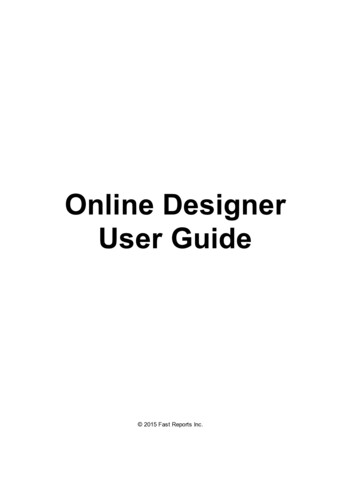
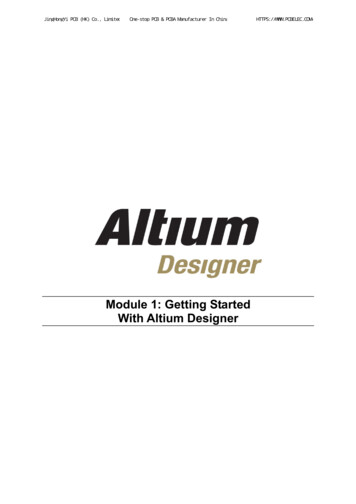

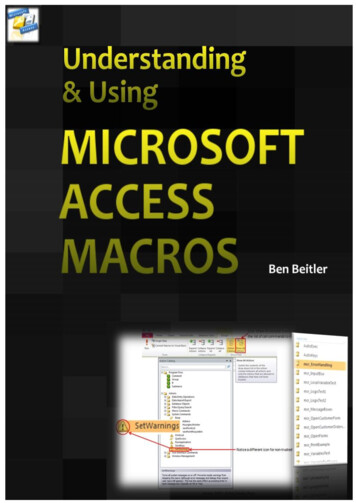


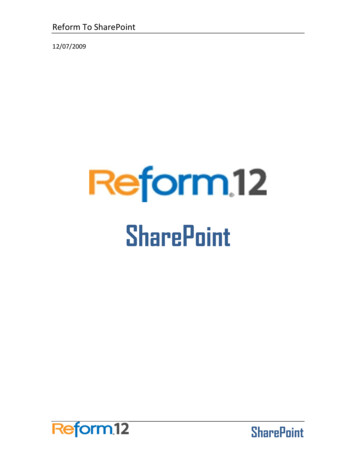


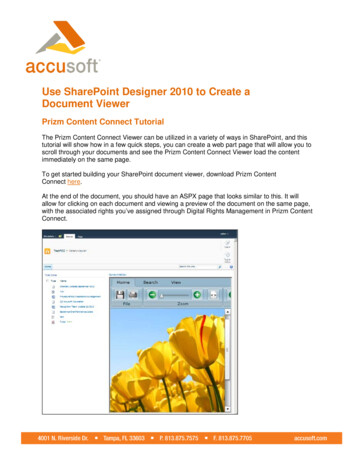
![Microsoft SharePoint Designer Crack [Mac/Win] (Final 2022)](/img/47/microsoft-sharepoint-designer.jpg)